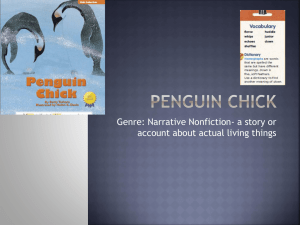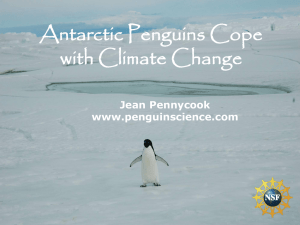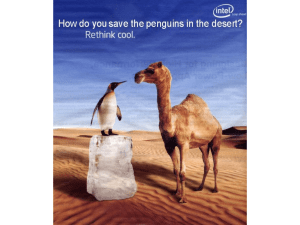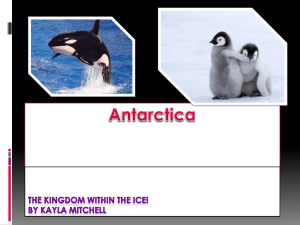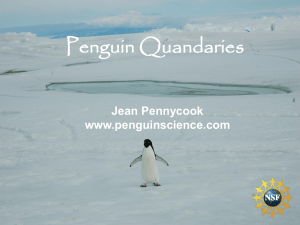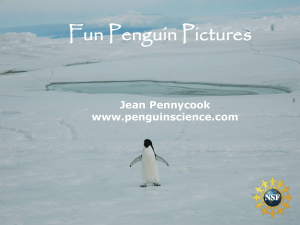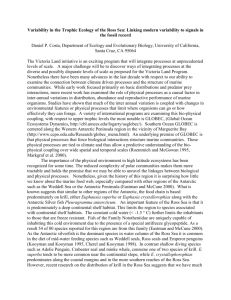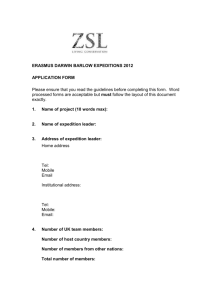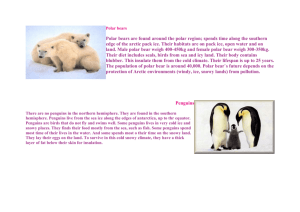Exam III Study Guide - People Server at UNCW
advertisement
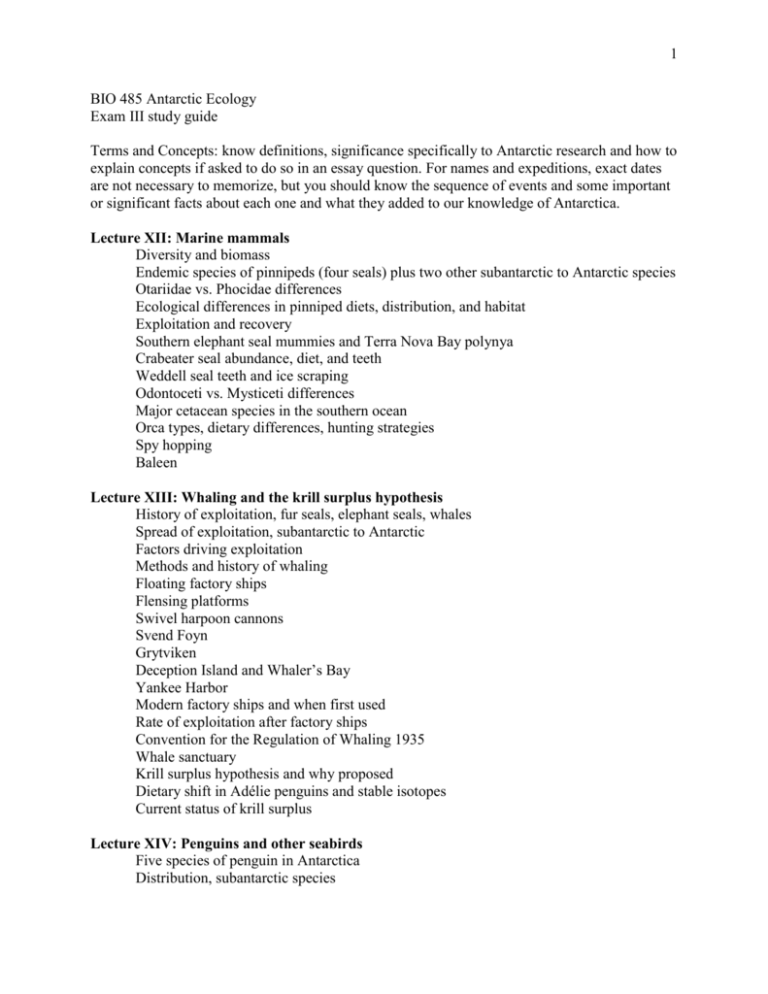
1 BIO 485 Antarctic Ecology Exam III study guide Terms and Concepts: know definitions, significance specifically to Antarctic research and how to explain concepts if asked to do so in an essay question. For names and expeditions, exact dates are not necessary to memorize, but you should know the sequence of events and some important or significant facts about each one and what they added to our knowledge of Antarctica. Lecture XII: Marine mammals Diversity and biomass Endemic species of pinnipeds (four seals) plus two other subantarctic to Antarctic species Otariidae vs. Phocidae differences Ecological differences in pinniped diets, distribution, and habitat Exploitation and recovery Southern elephant seal mummies and Terra Nova Bay polynya Crabeater seal abundance, diet, and teeth Weddell seal teeth and ice scraping Odontoceti vs. Mysticeti differences Major cetacean species in the southern ocean Orca types, dietary differences, hunting strategies Spy hopping Baleen Lecture XIII: Whaling and the krill surplus hypothesis History of exploitation, fur seals, elephant seals, whales Spread of exploitation, subantarctic to Antarctic Factors driving exploitation Methods and history of whaling Floating factory ships Flensing platforms Swivel harpoon cannons Svend Foyn Grytviken Deception Island and Whaler’s Bay Yankee Harbor Modern factory ships and when first used Rate of exploitation after factory ships Convention for the Regulation of Whaling 1935 Whale sanctuary Krill surplus hypothesis and why proposed Dietary shift in Adélie penguins and stable isotopes Current status of krill surplus Lecture XIV: Penguins and other seabirds Five species of penguin in Antarctica Distribution, subantarctic species 2 Ecology and breeding cycle of Emperor and Adélie penguins Pygoscelid penguins (3) and distributions, ecological differences Population changes in the Antarctic Peninsula of pygoscelids since 1970s Research on penguins using flipper bands, weigh bridges Three endemic species of seabirds in Antarctica Giant petrels and snow petrels Tubenoses Skua ecology and predation on penguins Giant petrel ecology and predation on penguins American sheathbill ecology, unique niche Other seabirds: kelp gull, Wilson’s storm-petrel, blue-eyed shag, Antarctic tern Lecture XV: Adélie penguin paleohistory Adélie penguin as a bioindicator species Four requirements for breeding sites Ornithogenic soils as a biological archive Five uses of the tissue archive at abandoned penguin colonies Principle of radiocarbon dating, half life, and how it works Marine carbon reservoir effect Adélie penguin paleohistory in the Ross Sea Occupation history and the Ross Ice Shelf retreat in the Holocene Evidence for open water in the Ross Sea prior to the Last Glacial Maximum Cape Adare, Marble Point, and the penguin optimum Ice core record and climate Beaufort Island molt site Tripp Island and Cape Hickey Lecture XVI: Discovery and early human history Ptolemy and Terra Australis Incognita Voyage of Magellan 1519 Discovery of Straits of Magellan Martin of Bohemia Cape Horn Tierra del Fuego Sir Frances Drake and voyage, new discoveries Antarctica appearing on maps, 1600s and 1700s Early possible sightings of the continent Discovery of Falklands, South Georgia, and South Shetland Islands Jean-Baptiste Bouvet and discoveries Yves-Joseph de Kerguélen and discoveries Captain James Cook, three voyages and discoveries Sealers after Capt Cook Captains William Smith, Nathanial Palmer, John Biscoe First scientific expeditions Captain Bellingshausen and Russian Antarctic Expedition 3 Alexander Island Dumont d’Urville and the French expedition Pointe Geologie Charles Wilkes and the U.S. Exploring Expedition James Clark Ross and the British Expedition to the south magnetic pole Possession and Franklin Islands, Mt. Erebus, Ross Ice Shelf HMS Challenger expedition Sir John Murray Lecture XVII: Heroic Age and the first scientists Genesis of the Heroic Age and how it receives that name H. J. Bull and Carsten Borchgrevink Cape Adare Adrien Victor de Gerlache and the Belgica expedition Henryk Arctowski, Frederick Cook, and Roald Amundsen Scurvy causes and symptoms, how to avoid Borchgrevink and the Southern Cross expedition Louis Bernacchi and Nicolai Hanson Otto Nordenskjold and the 1901 Swedish Expedition Snow Hill and Paulet Islands Hope Bay, Cape Well-met, and Seymour Island Captain Larsen and rescue The ships Antarctic and Uruguay Robert Falcon Scott and the Discovery expedition Ernest Shackleton and Edward Wilson Ross Island and Hut Point First attempt at the pole and outcome Sledges, man-hauling, and use of dogs and skis What was learned from Scott’s expedition Scott and Shackleton rivalry
